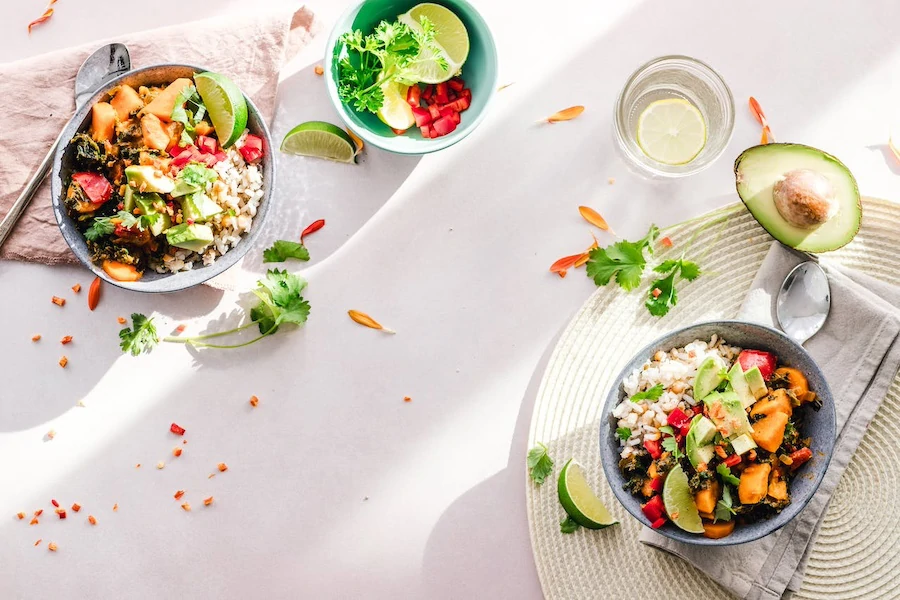Your bed sheets are one of the most essential fabrics to consider for a comfortable night’s sleep.
Bamboo fabric has become a popular eco-friendly alternative to cotton sheets. But with all the available choices, we wanted to settle once and for all whether bamboo sheets are better than cotton.
This article breaks down important comparison factors like thread count, overall comfort, durability, and environmental friendliness to help you make the right decision.
Table of Contents
ToggleBamboo Sheets Vs Cotton Sheets
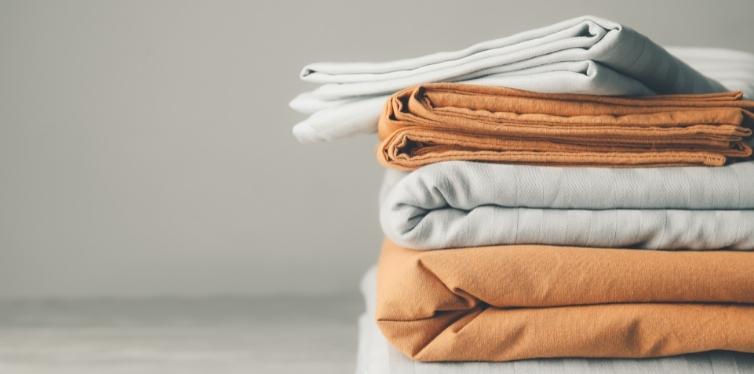
Thread count
Bamboo sheet brands typically display a thread count of 150 to 400. Unlike cotton sheets, however, thread count is NOT a good determinant for bamboo sheet quality. This is because there is no standard threat count method for bamboo sheets.
Bamboo fibers are naturally incredibly soft and silkier than cotton, so thankfully, we don’t need to rely on high threat counts to determine quality. Regarding cotton sheets, thread counts between 200 and 800 are common. Those at the higher end provide a softer feel.
Funnily enough, it helps to avoid thread counts higher than 1000. These often come at a premium price without a noticeable difference in quality.
Overall Comfort
The most important thing for overall comfort is having a comfortable night’s sleep.
Our bodies sweat while we sleep, which is absorbed by our bedding. Bamboo sheets are 40% more absorbent than cotton sheets. This means moisture wicks away from our skin more efficiently to provide a more comfortable sleep.
Breathability
Bamboo sheets are much more breathable than cotton sheets, whether you live in a hot or cold climate. Cotton sheets do well to insulate but do not have the same temperature regulation properties as bamboo.
Premium brands of cotton sheets do offer features like breathability and moisture-wicking but need to be switched out for something lighter during summer months and heavier during colder seasons.
Durability
The durability of your bed linens will depend on how well you take care of them. Both premium cotton sheets and bamboo sheets have explicit washing and care instructions. Following care instructions can help your bamboo sheets last for over 15 years.
Generally, bamboo sheets are best washed in cold cycles and air-dried. Avoid chemical-based detergents and bleaches along with excessive-high heat tumble drying.
Bamboo sheets tend to hold their color better in terms of dyed sheets. So, if you’re looking for that long-lasting, vibrant look, bamboo sheets are for you.
Fabric Weave
For both bamboo and cotton sheets, different types of fabric weaves will affect the feel of your linens:
- Percale – is a lightweight fabric with a weave closely woven with one thread over and one under. This results in a smooth and crisp, almost starched feel for the linen.
- Sateen – (not to be confused with satin) is threaded more vertically, with three threads over and one thread under, giving a very smooth and lustrous linen.
- Flannel – is a medium to heavy fabric and is more suitable for winter. They usually have a napped finish on one side for a warm, fuzzy, and cozy feel.
- Twill – is threaded to create a distinctively visible diagonal pattern with interlacing threads.
Eco-Friendliness
Bamboo sheets are generally more eco-friendly than cotton sheets. Bamboo is fast growing, uses less resources, and doesn’t require re-planting after harvesting.
In terms of production, bamboo sheets are usually superior in terms of their environmental-friendliness; this does depend on the fiber extraction process (mechanical vs. chemical).
Cost
One of the most important factors when choosing linens – the dollars!
Compared to low-thread count cotton sheets, bamboo sheets are more expensive. However, bamboo sheets are around the same price as higher thread count sheets such as Egyptian or Pima cotton.
The amount you spend on your bamboo sheets will depend on the bamboo bedding brand you choose and your bed size.
Susceptibility to pilling
Friction is the main contributor to bedsheet pilling.
The natural fibers of bamboo sheets, which tend to be longer than other fabrics, have very little friction, making them superior to cotton sheets for pilling.
Different Types of Bamboo Fibers
Unfortunately, not all bamboo sheets are created equal. If you look at the tag, you will see several different types of bamboo fibers. Each has a different production process, which can be good or bad depending on what you look for in linens.
- Viscose rayon is one of the most common bamboo fibers and can easily be found. It has all the positive benefits of breathability, softness, and durability. However, its production requires an intense chemical process using harsh chemicals like sulfuric acid and sodium hydroxide. The good thing is that these chemicals do not end up in your linens; the bad thing is that they may end up as environmental waste. Something to think about if you are looking for a product produced with a low environmental impact.
- Lyocell/Tencel – This has the most eco-friendly production process for bamboo sheets. It still requires chemicals for production. However, they are produced in a 100% closed-loop cycle, meaning the chemicals are recycled and contained to be used again instead of dumped into the environment. Bamboo sheets made using only this process are challenging to find.
- Bamboo blend with cotton – a typical blend includes 70% bamboo lyocell or rayon and 30% cotton, 60% bamboo, and 40% cotton. The addition of cotton makes the fabric slightly less soft than 100% bamboo. It could be a less sustainable choice for your linens as cotton has a higher environmental impact.
- Bamboo linen – is a chemical-free and labor-intense production process but does not produce the intense softness you may get from Rayon or Lyocell-produced linens. It’s a sustainably produced fabric but is more likely to wrinkle and requires ironing after washing. Despite their high maintenance needs, they are still breathable and keep you cool at night.
The Different Types of Cotton Sheets
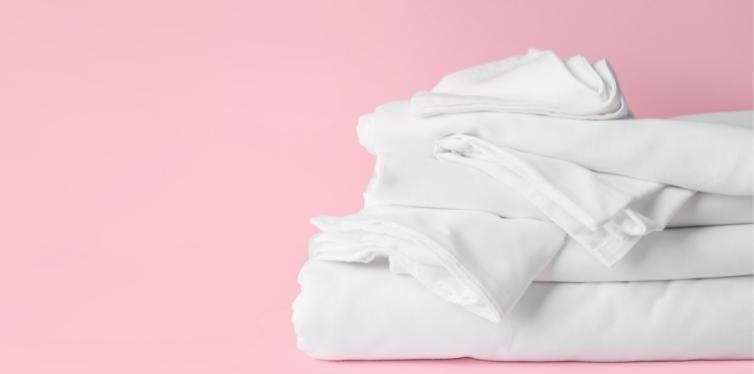
Egyptian and Pima cotton are the best cotton sheets available as they have higher thread counts. They will both require proper care and washing to ensure their longevity. These premium linens will be more expensive than standard cotton sheets.
If you still prefer using cotton linens but want to be more eco-friendly, you can look for sheets that are produced from organic cotton. Organic cotton sheets don’t require synthetic agricultural chemicals such as fertilizers or pesticides, reducing their environmental impact. This results in a chemical-free fabric.
The Best Bamboo Sheets on the Market
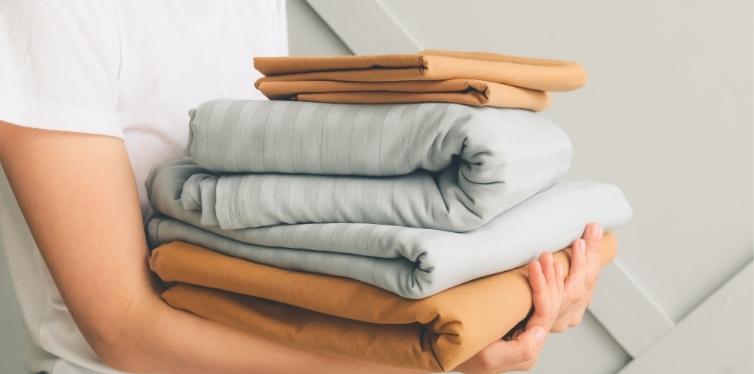
There are dozens of brands on the market that produce bamboo sheets with the abovementioned production processes. When I look for a reliable set of bamboo linens, I want them to be, most importantly, comfortable but also environmentally friendly.
Cariloha Bamboo Sheet Set
The Cariloha bamboo sheet set is one of the softest and most luxurious bamboo linens. Although they are only 230 thread count, their softness will surpass that of 1000 thread count cotton sheets. Moisture-wicking and naturally breathable, they will keep you cool and comfortable regardless of the time of year. Cariloha is one of the premier producers of bamboo bedding, clothing, and general fabric products.
Vivendi Pure Sleep Cotton and Bamboo Blend Sheet Set
The Vivendi Pure Sleep Cotton Bamboo Blend Sheet Set is an affordable and eco-friendly choice for someone looking to try out bamboo linens for the first time. Blended with 60% cotton and 40% bamboo lyocell, they are produced with the environment in mind. They are a soft fabric with moisture-wicking and antibacterial properties that will help absorb moisture away from your body for a more comfortable sleep.
Ettitude Bamboo Sheet Set
The Ettitude Bamboo Sheet Set is one of the only 100% lyocell bamboo produced available on the market. Since the chemicals used during production are done in a closed-loop process, the overall environmental impact for production is low. They combine all the great benefits of bamboo bedding: incredibly soft with a smooth texture, breathability and thermoregulation, and eco-friendly production.
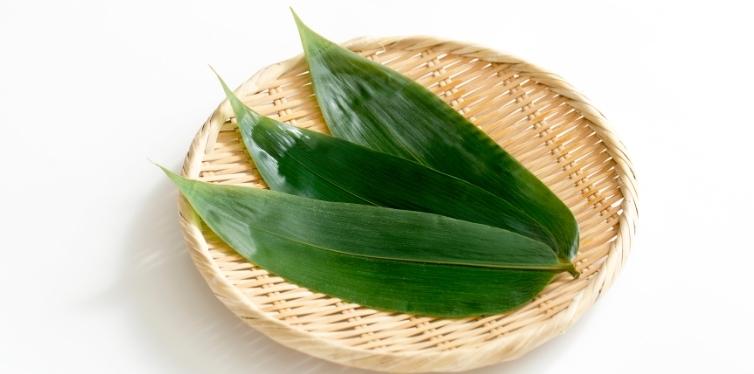
Final Thoughts
It’s up to you which type of linens you prefer to sleep in. I always like a nice balance between comfort and price without compromising the environment, so generally, I stay away from cotton sheets.
Always look at the label to find out if you are buying “bamboo rayon/viscose,” “bamboo linen,” or “bamboo lyocell.” In the US, manufacturers are required by law to specify the production of the fabric on the label. However, this may be different for materials produced overseas.
Bamboo sheets made from Lyocell/Tencel or bamboo linen will be your best bet if you are looking for the most eco-friendly option. They offer all of the positive benefits of bamboo fabric: softness, durability, breathability, moisture absorption, and antibacterial qualities without the high environmental impact of cotton sheets.
More commonly available are bamboo from rayon/viscose. These can, however, involve a harsh chemical process during production, and the environmental impact of bamboo as a plant and material is much lower than that of a traditional cotton plant or the manufacturing of polyester. To learn more about the production process, visit our How are bamboo sheets made article.
If you still want to stick with cotton as your fabric but want something more eco-friendly, look for cotton sheets produced with organic cotton.
This has helped you make a more informed decision on the bed sheets you choose. I wish you and your family a happy and comfortable night’s sleep. Sweet dreams!


